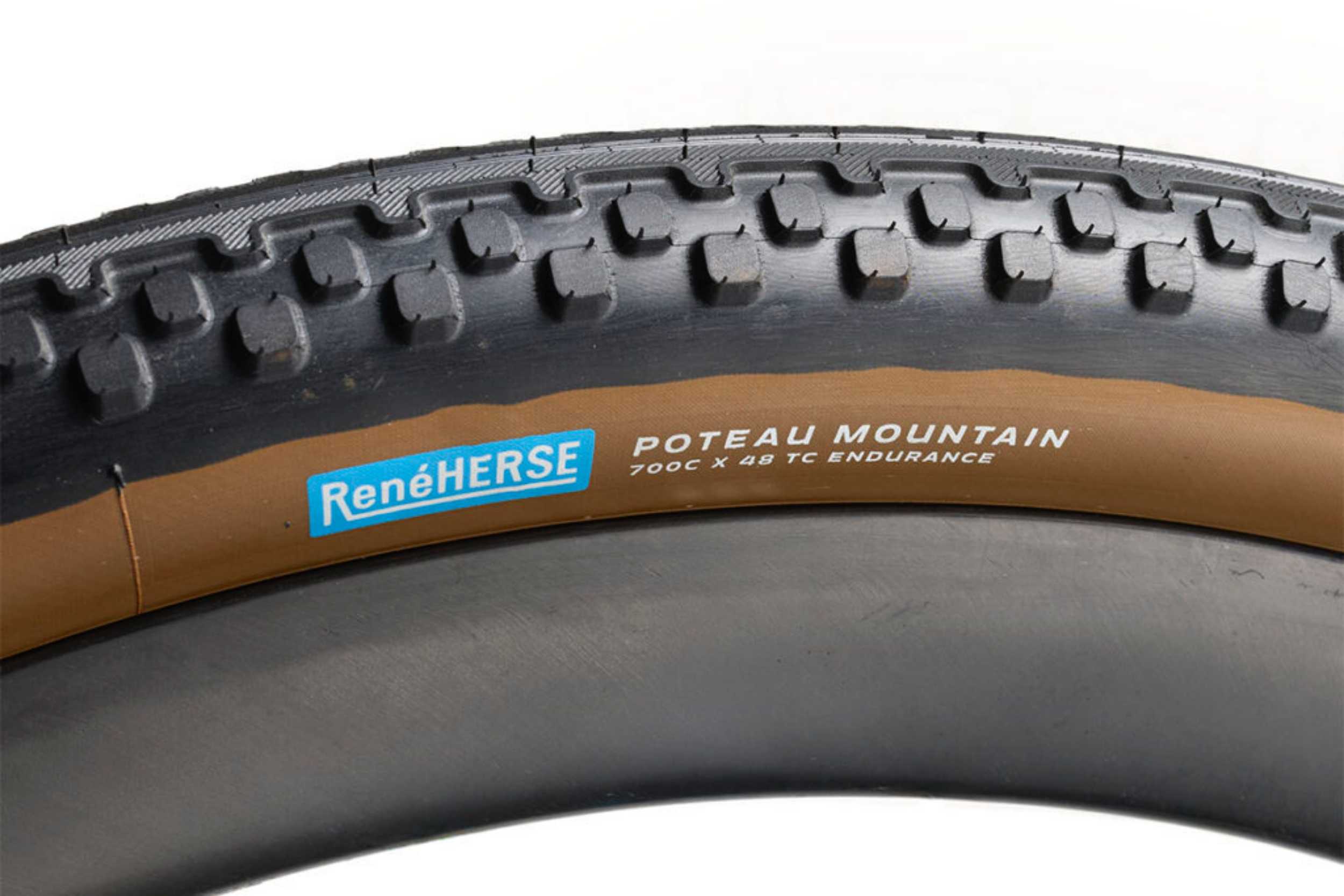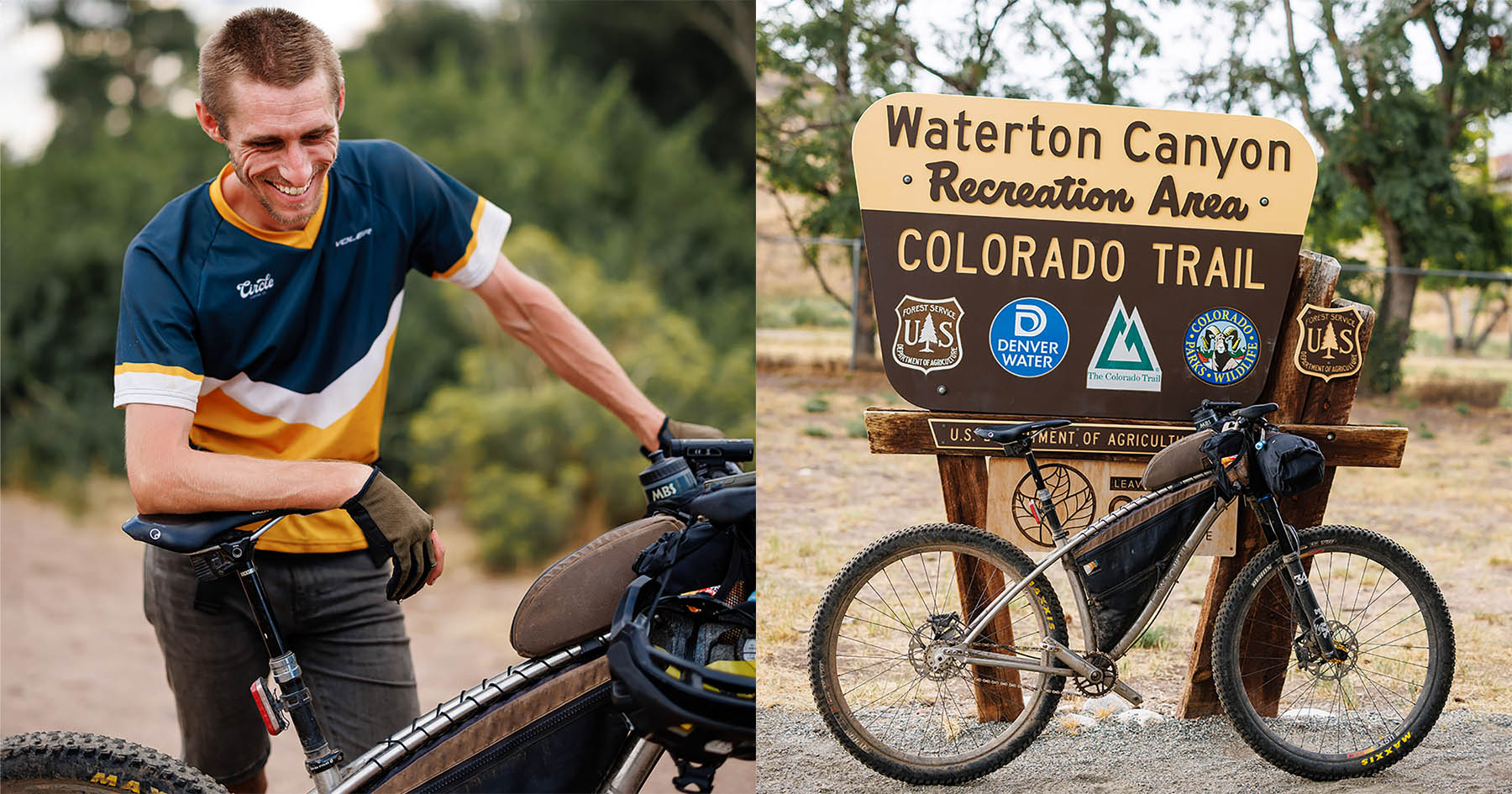PROTECT YOUR DNA WITH QUANTUM TECHNOLOGY
Orgo-Life the new way to the future Advertising by AdpathwayThe Cane Creek Invert CS is part of a new wave of gravel suspension forks, but unlike most, it’s tuned specifically for high-frequency gravel chatter rather than the bigger impacts.
With its upside-down design and overall simplicity, it promises big gains in comfort while keeping weight low and maintenance minimal.
In this review, I’m putting the Cane Creek Invert CS to the test, digging into its design, setup, and real-world performance. I’ll describe how it handles gravel chatter and singletrack trails, and you can let my vibration test results help you decide if its premium price is justified.
Let’s get into it!
What is the Cane Creek Invert CS?

- Wheel Size: 700C
- Spring Type: Air
- Offset: 45mm
- Thru Axle: 12 x 100mm
- Weight: 1113 grams
- Suspension Travel: 40mm
- Axle to Crown: 435 mm
- Steerer Tube Size: Tapered 1-1/8″ to 1-1/2”
- Brake Rotor: Flat Mount 160mm, or 180mm with an adapter
- Maximum Tire Width: 50mm (2.0”) with 6mm of clearance on either side
- Price: US $1199 / £1199 / €1299
The Cane Creek Invert is an upside-down gravel suspension fork purpose-built for fast gravel roads. It’s tuned to stay especially active over high-frequency dirt road chatter, helping to smooth surface irregularities and make rough, bumpy roads noticeably more enjoyable.
Aesthetically, it blends in better than most gravel suspension forks. While most gravel suspension forks resemble scaled-down mountain bike forks, the Invert’s design flows more naturally. I like how the thicker crown blends into the head tube, and the slim lower legs taper neatly down to the dropouts.
Weight is another strong point – the Invert comes in lighter than its competition by anywhere from 100 to 600 grams.
Gravel suspension fork weights in ascending order (with links to my reviews):
Lauf Grit SL – 960 grams
Cane Creek Invert SL – 990 grams
Cane Creek Invert CS – 1113 grams
Fox 32 TC – 1226 grams
HiRide Sterra – 1300 grams
Rockshox Rudy – 1317 grams
Cannondale Lefty Oliver – 1340 grams
KS GTC – 1385 grams
MRP Baxter – 1420 grams
State All-Road – 1600 grams
SR Suntour GVX – 1628 grams
 The Cane Creek Invert CS has a lockout switch at the top of the crown. Image: Cane Creek
The Cane Creek Invert CS has a lockout switch at the top of the crown. Image: Cane CreekThere are two models available. The CS version (tested here) offers 40 mm of suspension travel plus a lockout for climbing or sprinting. The SL version trims weight with 30 mm of travel and no lockout, trading a little versatility for a lighter package.
The fork uses a 12×100 mm hidden thru-axle to secure the wheel and standard flat-mount brake calipers, making it fully compatible with modern road and gravel setups. The only potential compatibility concern is the axle-to-crown length. At 425 to 435 mm, it may not suit every gravel frame, so it’s best to check with your bike manufacturer or a trusted shop to confirm it will fit your bike.
Riders up to 113 kg (250 lbs) can use the Cane Creek Invert without issue. The warranty period is two years from the date of purchase, and it covers materials and workmanship.
Production parts for the Cane Creek Invert are manufactured in Taiwan before being sent back and assembled at their facility in Fletcher, North Carolina (USA).
The Benefits of Inverted Fork Designs
 Inverted forks might look strange, but there are benefits to their design.
Inverted forks might look strange, but there are benefits to their design.Cane Creek didn’t just invert the fork to be different to the competition; there are genuine benefits to an upside-down design.
Inverted suspension forks offer an impressive stiffness-to-weight ratio because the thickest, most rigid section of the fork sits closest to the head tube, where leverage forces are highest.
Another advantage is that the seals and bushings are positioned at the bottom of the upper legs, meaning they’re always bathed in oil. This keeps everything running smoothly and, thanks to gravity, helps prevent grit from working its way into the sliding components.
There’s also the benefit of reduced unsprung mass. With less weight in the moving portion of the fork, it reacts quicker to bumps, improving responsiveness over rough surfaces.
While the fork chassis is impressive, there are some interesting things going on inside the fork too.
Inside The Cane Creek Invert Fork
 It’s strange seeing the fork stanchions at the bottom rather than the top!
It’s strange seeing the fork stanchions at the bottom rather than the top!Gravel bikes are most often ridden over high-frequency chatter (like washboard surfaces) rather than subjected to big, forceful impacts such as drops or g-outs. This creates an opportunity for a suspension design tailored specifically to filtering out chatter, rather than absorbing the large hits typical of mountain bike trails.
Cane Creek made the bold decision to remove the suspension damper entirely. According to their test riders, prototypes with and without a damper showed no noticeable performance difference on gravel roads.
For context, a damper’s role is to control how quickly the front wheel moves up and down by dissipating energy from the fork spring. This keeps oscillations in check. While dampers are essential for long-travel forks (say, 120mm or more), they’re not strictly necessary for short-travel designs like the Invert’s 30 to 40mm. In fact, when a fork doesn’t use a damper, you (the rider) can function as the damper on moderately rough, non-technical terrain.
The Invert relies on an air spring system that supports up to 250 psi, with a simple adjustment process. Setup requires some trial and error; you’ll need to balance small-bump compliance, protection against bottom-outs (which can almost be eliminated with the right pressure), and stability under hard braking. Fortunately, the air valve is easy to reach, and most shock pumps easily exceed the 200 psi mark.
There are no compression or rebound speed adjustments, but you can tune the spring’s progressivity using up to three internal volume spacers. These let you control how quickly the fork firms up before bottoming out. Heavier riders, those with a more aggressive style, or anyone tackling rougher terrain will generally benefit from adding more spacers.
By removing the damper and fork adjustments, Cane Creek didn’t just save weight – they also simplified the internal components, reducing the amount of maintenance needed over time.
Cane Creek Maintenance Schedule
 The Cane Creek Invert CS requires less servicing to keep it performing optimally.
The Cane Creek Invert CS requires less servicing to keep it performing optimally.One big advantage of this fork, especially for riders like me who prefer to spend time riding rather than tinkering, is its low-maintenance design. While the Invert isn’t completely maintenance-free, its service intervals are often two to four times longer than those of typical gravel suspension forks.
According to Cane Creek, the recommended service schedule includes:
- 100 hours, or annually – oil refresh (twice as long as typical)
- 200 hours – wiper replacement
- 400 hours – air spring service (four times as long as typical)
More information about the Invert’s maintenance can be found HERE.
Disadvantages of the Cane Creek Invert CS
 The external cable routing is a bit messy for my liking, but admittedly, it’s hard to design around.
The external cable routing is a bit messy for my liking, but admittedly, it’s hard to design around.The Cane Creek Invert CS has a lot of strengths, but it’s not without its drawbacks.
First, there’s no internal cable routing (for obvious reasons). The external brake hose can shift around and occasionally rub during hard braking or on big hits. Cane Creek does include rubber guides to quiet it down, but the solution feels a bit makeshift.
Second, the fork doesn’t have mounts for racks, fenders, or dynamo lights. If you’re aiming for a more utility-focused gravel build, this lack of versatility could be a dealbreaker. Cane Creek has informed me they will soon be offering Invert-specific cargo mounts for carrying extra gear on prolonged adventures, so keep an eye out for those.
Then there’s the price. At over US $1000, the Invert CS sits at the very top of the gravel fork market. Later in this review, I’ll share vibration test results to see whether the performance matches the price.
Finally, and this feels strange to say, the tire clearance might actually be a limitation. While it accommodates up to 700C x 50 mm rubber with 6 mm clearance on either side, many upcoming gravel bikes will be rolling on 55 to 57 mm wide tires. These wider setups have proven not only quicker on loose gravel but often faster on smooth surfaces as well, leaving the Invert CS slightly behind the curve here.
Riding The Cane Creek Invert CS
 The Cane Creek Invert is at home on gravel roads. Image: Cane Creek
The Cane Creek Invert is at home on gravel roads. Image: Cane CreekThe Cane Creek Invert really shines on gravel. It’s the closest I’ve come to that elusive “magic carpet ride” feeling, with the front end floating over loose rock and chatter. On rough gravel, it’s genuinely impressive.
There is a bit of bobbing on asphalt during hard efforts, but it’s far less pronounced than what I experienced with the Lauf Grit SL I’ve previously fitted to my bike. To keep the movement in check on gravel, I found that adding 5 to 10 psi to the front tire was effective – it encouraged the fork to take on more of the suspension work while slightly firming up the tire’s behaviour.
The lockout function proved especially useful on smooth surfaces. It doesn’t completely freeze the fork, but it does stiffen it enough to reduce bobbing significantly while still filtering out small vibrations. I even found it handy when transporting the bike: during my first roof-rack trip with the fork unlocked, the bike swayed more than I liked, but with the lockout engaged on the next drive, it sat much more stable.
One thing that surprised me was the amount of flex under heavy braking and aggressive cornering. At first, the visible wheel movement in front of me was disconcerting, but I eventually adapted to it. I’d happily accept a small weight penalty for extra stiffness, but in cycling, weight often rules supreme – even when it compromises other aspects of performance. Fortunately, cranking down the thru-axle a little harder than usual did help eke out some additional stiffness.
For setup, Cane Creek recommends 180 to 190 psi for my 86 kg weight. I experimented with 200 psi for better braking support, but it proved too harsh on gravel. Settling at 190 psi gave me the best balance between comfort and front-end control. Every rider will need to fine-tune their own setup, but once dialled in, the ride quality is outstanding.
Off-Road Suspension Performance
 I found the Cane Creek Invert still useful on off-road singletrack trails.
I found the Cane Creek Invert still useful on off-road singletrack trails.Encouraged by how well the Invert performed on gravel, I decided to try it on some mountain bike singletrack. This is definitely outside its intended use, and the limitations became clear on rocky descents.
Without a damper and with more flex than a typical fork, the Invert can struggle on rough terrain – the front wheel starts to bounce, handling becomes twitchy, and arm fatigue sets in quickly.
Compared to other gravel suspension forks I’ve tested, it still holds its own as long as you manage your speed and don’t push it too far beyond its limits. And compared to a carbon rigid fork, the difference is night and day – off-road performance is vastly improved.
After hundreds of hours on this fork, I can confidently say I rarely miss having a damper. It’s only when pushing it well beyond its design brief (like on rough singletrack descents) that other gravel suspension forks show a real advantage.
It’s now time to find out how the Cane Creek Invert CS performed in my vibration tests.
My Test Bike and Vibration Measurement Procedure
 I measured the vibrations of the Cane Creek Invert against a different suspension fork on my gravel bike.
I measured the vibrations of the Cane Creek Invert against a different suspension fork on my gravel bike.This vibration test was conducted on my Mondraker Dusty gravel bike fitted with Spank Flare 24 Vibrocore wheels and 700C x 45 mm Challenge Getaway tires set to 40 psi.
I compared the 40mm travel Cane Creek Invert CS with the 20 mm travel HiRide Sterra suspension fork currently on my bike. Both setups used the same 70 mm stem and Lauf Smoothie 440 mm wide handlebar.
I have two test scenarios: a big hit test that simulates riding across a 30 mm tall obstacle like a tree root or edgy rock, and a high-frequency chatter test that simulates riding on a bumpy gravel road.
You can read more about my vibration measurement procedure HERE.
Vibration Test Results
Big Hit Test

| Average Acceleration (g) | Vibrations When Compared to the HiRide Sterra | |
| HiRide Sterra | 2.65 | – |
| Cane Creek Invert CS | 2.95 | 11.3% More Vibrations |
In the big hit test, the HiRide Sterra’s damper really proves its worth – it consistently recorded lower vibrations than the Cane Creek Invert over this obstacle, despite the Invert CS offering double the travel (40 mm vs 20 mm).
This test demonstrates the effectiveness of a hydraulic damper in mitigating vibrations following a significant impact. Repeat those hits a few times in a row, and the Invert will get overwhelmed, while suspension forks with a damper will stay composed. This is likely the reason why I find the Sterra better on singletrack than the Invert, despite it only having half the suspension travel.
That said, while the vibrations were higher with the Invert, I never actually perceived any discomfort over the big hit.
High-Frequency Chatter Test

| Average Acceleration (g) | Vibrations When Compared to the HiRide Sterra | |
| HiRide Sterra | 2.26 | – |
| Cane Creek Invert CS | 1.90 | 15.9% Less Vibrations |
In the high-frequency chatter test, the Invert CS flipped the script, outperforming the HiRide Sterra by nearly 16%. This is a much bigger difference than I was expecting to see!
It’s hard for a suspension fork to damp that many vibrations on a gravel road, but without a damper to slow its response, the Cane Creek Invert reacts very quickly to fast, repetitive bumps. This rapid action smooths out high-frequency vibrations even more effectively than the Sterra, which itself reduced vibration by 6% compared to a particularly compliant rigid carbon fork (Open WI.DE).
Summary

PROS
- Class-leading performance on gravel surfaces
- Looks amazing
- Less maintenance than most forks
- Lockout button effectively reduces unwanted bounce
CONS
- External brake routing is messy
- No mounting points, even for fenders
- Lack of a damper limits versatility
- Can alter the frame geometry on some gravel bikes
On gravel surfaces, the Cane Creek Invert CS is the best suspension fork I’ve tested for vibration damping and overall smoothness. It soaks up chatter beautifully, looks more refined than most competitors, comes in lighter, and demands far less maintenance than a typical suspension fork.
That said, if you want a fork that excels equally on both gravel and singletrack, there are better options out there. Without a damper, the Invert can’t keep the front wheel glued to rough trails as effectively as other gravel suspension forks.
Yes, the lightweight design brings some flex and compromises, but for me, the comfort gains on gravel roads are more than worth it. In fact, the Invert impressed me so much that I ended up buying one for myself!
Time to put this fork to work on new adventures.



















 English (US) ·
English (US) ·  French (CA) ·
French (CA) ·